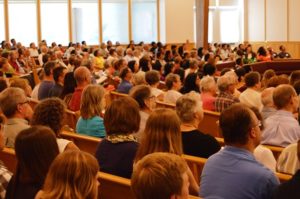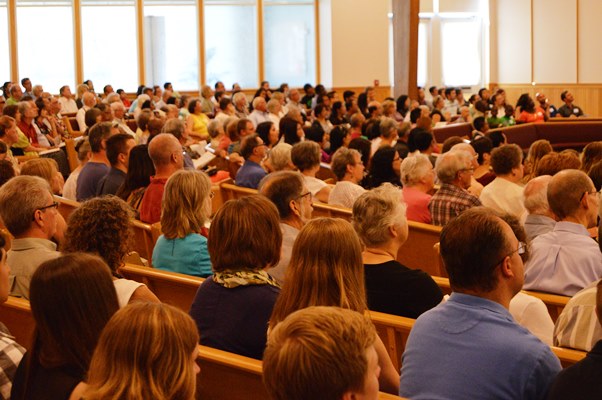What is the Correct Order of Worship?
Podcast: Play in new window | Download
Subscribe: RSS
 What does the Bible say about where and in what order we should worship?
What does the Bible say about where and in what order we should worship?
The worship assemblies of the first century would not have been significantly different than what we do today. Fundamentally, they did the same things that we do. They had prayer (1 Timothy 2:8), singing (Hebrews 2:12), the Lord’s Supper (1 Corinthians 11:23-26), preaching (Acts 5:42), and giving (1 Corinthians 16:1-2). That they did these activities in some order was necessary since they could not all be done at the same time without confusion. The one additional element that they had in their assemblies that we do not have today is the practice of miracles such as speaking in tongues and prophesying. In 1 Corinthians 12-14, the apostle Paul addresses the abuse of miracles in the worship assembly. He concludes that section of teaching with this admonition: “Let all things be done decently and in order” (1 Corinthians 14:40).
Some brethren have taken this verse to mean that the worship assembly must be conducted in a very specific order and that this order must never change. That is not what Paul was talking about. Of course, if a local congregation desired to have a specific order of worship, there would be nothing wrong with that whatsoever, but we must not think that because one congregation does it that way, that all congregations must do it. Some congregations have the Lord’s Supper before the sermon; some have it after the sermon. Either way is fine. Some congregations have six songs; some have seven. Some congregations have two prayers, and some have three. The order of services is not what matters; what matters is whether the services are conducted in an orderly way, without confusion and chaos. The worship assembly at Corinth was being conducted in a disorderly way with several people trying to prophesy and speak in tongues all at the same time. Paul describes this chaos in 1 Corinthians 14:26-33. In verse 31 he says, “For you can all prophesy one by one, that all may learn and all may be encouraged.” In verse 33 he says, “For God is not the author of confusion but of peace, as in all the churches of the saints.”
So, while the Bible does not give us a specific order of service, the principles of orderliness and peace must guide any decisions that are made to conduct a worship service. At one congregation my family and I worshipped at, we had the Lord’s Supper after the sermon. This was due to the work schedule of some of the members of the congregation who had shift work on Sunday morning. By scheduling the Lord’s Supper later, they were able to work that part of the service into their lunch break. In one congregation that I visited, they had the worship service first, and then Bible classes after the worship service. The Bible class attendance went up because many more people decided to stay after the worship service concluded. In the New Testament times, many of the worship services were conducted in people’s homes (Romans 16:5, 1 Corinthians 16:9, Colossians 4:15, Philemon 1:2), though some of them were conducted in the guest rooms, usually the upper rooms of buildings (Mark 14:14-15, Acts 1:13, Acts 20:8). Some were rather large and could accommodate a sizeable group. Paul would also meet in Synagogues when he first went into a city to preach the gospel (Acts 9:20, 13:5, 13:14, 14:1, 18:4, 19:8). Synagogues were structures owned by the Jewish community of a town. This model of assembling would have been familiar to Jewish Christians as well as gentiles who favored Judaism. The synagogue model likely influenced how early Christians met and ordered their worship in the early church.

